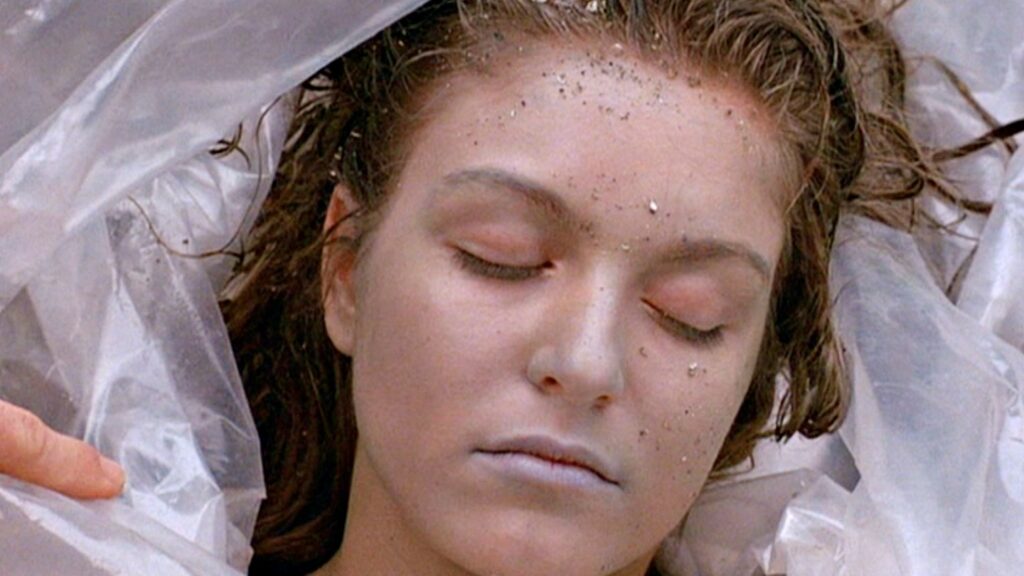The Camerimage film festival is paying tribute to the late, great David Lynch this year, and one of the guests drawing a steady crowd in Toruń is Ronald Víctor García, the cinematographer who helped define the look of Twin Peaks and its feature-film companion Twin Peaks: Fire Walk With Me (1992).
Lynch is often most closely linked to Frederick Elmes (Eraserhead, Blue Velvet, Wild at Heart), whose deep blacks, stark contrasts and practical light sources grounded the director’s surreal imagery, as well as Peter Deming (Lost Highway, Mulholland Drive, Inland Empire), whose clean compositions and abrupt shifts in exposure and color shaped Lynch’s later dream-logic aesthetic. But Garcia’s work on Twin Peaks is equally fundamental to the Lynch palette.
“He wanted something warm,” Garcia says of Lynch’s vision for the series. “Everybody shoots the Northwest, up in Washington State, in blue. The forest in blue, cold colors. David didn’t want blue. He wanted warmth.” After several days of testing in Seattle — and a near-mutiny at the local lab — Garcia landed on the combination that defined the show: an 85 correction filter paired with a new pure-glass LLC filter that pushed the shadows toward a yellow-orange tone. The final piece was Fuji stock. “The Fuji film could really reach into the shadow area and make the dark shadows warmer, just enough to where it changed the look of the film,” he says.
Garcia recalls that Lynch rarely gave technical directions, preferring metaphors. When shooting the river pan that appears in the opening credits, Garcia moved too quickly for Lynch’s taste. “I was used to television — you got three seconds and it’s cut — so I was speeding along. He kept saying, ‘Ron, it’s too fast.’ We did that five times. Finally he looked at me and said, ‘Ron. Think underwater.’ I pictured myself in a swimming pool trying to walk against the thickness of water, and that was it — perfect.” Later, while Garcia was shooting establishing shots in Washington for Season 1, Lynch called from Los Angeles with a single instruction: “Ron, too weird. Think mysterious,” he said — before hanging up. “It was the same with his actors,” Garcia adds. “Because of his meditation, he was present every moment. He was able to see who he was talking to and reach into your psyche without many words.”
Garcia’s confidence with Fuji stock underpinned all of this. “My whole career was Fuji film,” he says. As a young independent filmmaker, he learned its nuances out of necessity; in television and features, it gave him latitude Kodak didn’t. Fuji’s “spaces between my fingers as the light went through” reduced crosstalk, he explains, allowing faster setups, fewer gels and more flexibility in mixed lighting — an advantage when working at Lynch’s pace. On Fire Walk With Me, that pace accelerated dramatically: Garcia shot more than a million feet of film in 42 days on one camera. “David got used to me shooting very fast,” he says, a rhythm that opened space for Lynch to explore performance and generated the vast body of material later assembled as The Missing Pieces.
Garcia’s work with Fuji also caught the attention of Michael Mann, who recruited him for Season 2 of NBC’s Crime Story. Mann’s directive couldn’t have been more different: “I do not want you to hand me a mundane image… If you fail, we’ll just reshoot it.” Mann pushed Garcia to “step out of the box,” then left him completely alone. The contrast remains clear in Garcia’s mind: “Shooting with Michael Mann, it was like being on the bullet train in Japan. Shooting with David Lynch was like being in a canoe on a very calm lake.”
Looking back over his decades-long career, Garcia, 85, is blunt about the impact of new technology on contemporary television aesthetics. “I hate to say this, but I think it all looks the same,” he says. “And it’s because of AI, CGI, the technology and the special effects taking over the whole ball of wax. I’m here at Camerimage to watch foreign films, not Hollywood films, because I’m interested in what the cinematographers are doing. I think the creativity comes out of having not enough equipment and not enough time and having to find a solution.”
In an era defined by uniformity, Garcia’s work with Lynch stands out for the same reasons it did in 1990: A handmade visual approach built on film stock, filtration and in-camera experimentation — and a director-cinematographer collaboration that refused to settle for the expected.

